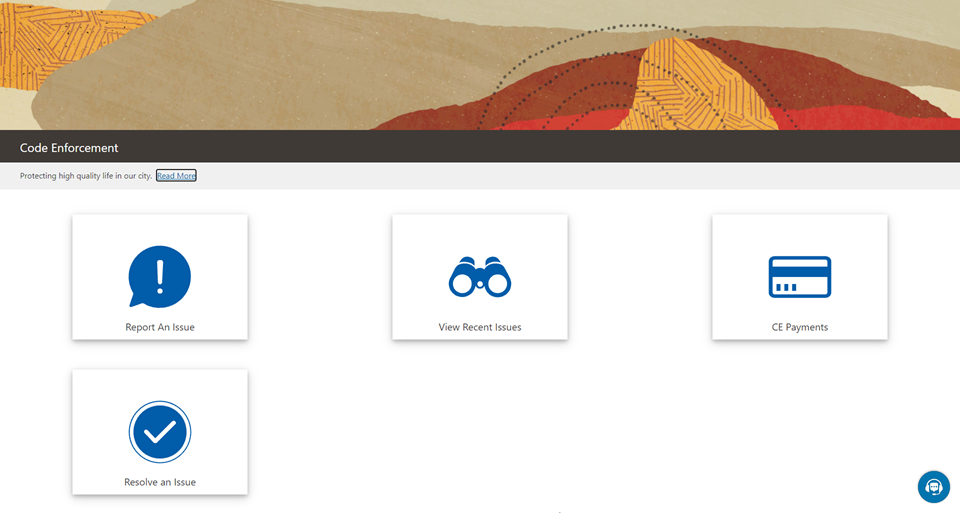The Public User Landing Page for Code Enforcement
The public user landing page for code enforcement is the entry point for public users who want to report an issue, track issues that they reported, see recent issues in the agency’s jurisdiction, or pay a citation.
This example illustrates the public user landing page for code enforcement. In this example, a registered public user has signed in.

For information on configuring these elements of the welcome banner, see Setting Up Agency-Level Options for Code Enforcement.
On the landing page, public users have access to these actions:
|
Tile or Button |
Who Can Use |
Description |
|---|---|---|
|
Report an Issue |
Anonymous and registered users. |
Report an issue to the agency. During the reporting process, the public user identifies the type of issue, provides the issue location, describes the issue, and answers any additional questions that the agency has configured. See Reporting Issues. |
|
Track Issues |
Registered users. This button is visible only after the user signs in. |
View status and other information about issues that the user reported while signed in. A user who reports an issue without signing in can’t track the issue. See Tracking Issues. |
|
View Recent Issues |
Anonymous and registered users. |
View a map with markers that identify the locations of recent issues, or view a searchable list of the issues. |
|
CE Payments |
Registered users. Anonymous users are prompted to sign in before continuing. |
Make an online payment for a code enforcement fees. |
|
Resolve an Issue |
Registered users. Anonymous users are prompted to sign in before continuing. |
Claim responsibility for an issue, and perform actions such as viewing notices or appealing a citation. See Resolving Issues. |